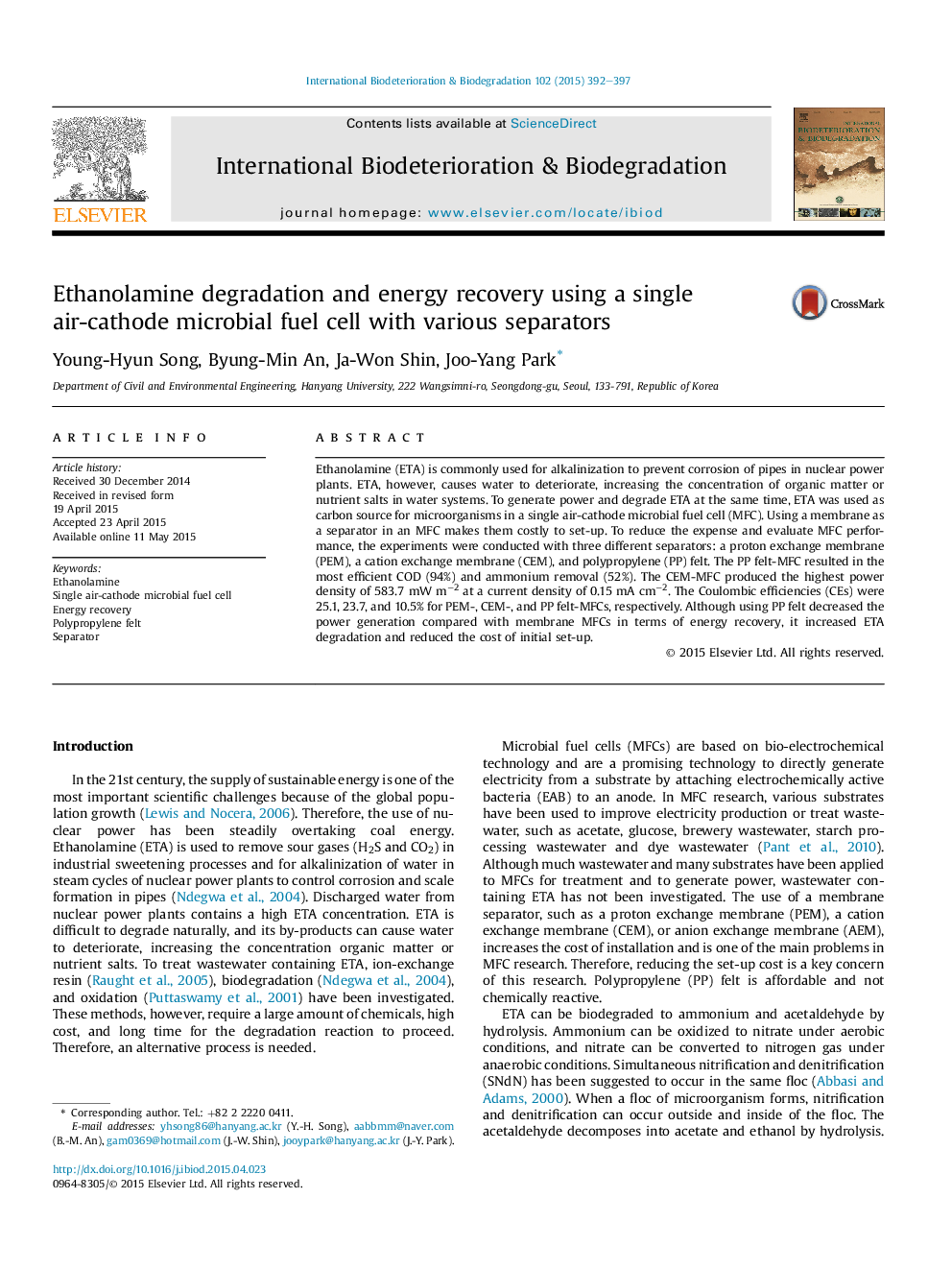| Article ID | Journal | Published Year | Pages | File Type |
|---|---|---|---|---|
| 4364393 | International Biodeterioration & Biodegradation | 2015 | 6 Pages |
•We demonstrated the possibility of ETA and PP felt on the single air-cathode MFC.•Removal efficiency of COD and ammonium resulted in 94% and 53% on the PP felt-MFC.•Coulombic efficiency was 10.5% on PP felt-MFC using ETA as substrate.•PP felt-MFC could be used for simultaneous COD biodegradation and energy recovery.
Ethanolamine (ETA) is commonly used for alkalinization to prevent corrosion of pipes in nuclear power plants. ETA, however, causes water to deteriorate, increasing the concentration of organic matter or nutrient salts in water systems. To generate power and degrade ETA at the same time, ETA was used as carbon source for microorganisms in a single air-cathode microbial fuel cell (MFC). Using a membrane as a separator in an MFC makes them costly to set-up. To reduce the expense and evaluate MFC performance, the experiments were conducted with three different separators: a proton exchange membrane (PEM), a cation exchange membrane (CEM), and polypropylene (PP) felt. The PP felt-MFC resulted in the most efficient COD (94%) and ammonium removal (52%). The CEM-MFC produced the highest power density of 583.7 mW m−2 at a current density of 0.15 mA cm−2. The Coulombic efficiencies (CEs) were 25.1, 23.7, and 10.5% for PEM-, CEM-, and PP felt-MFCs, respectively. Although using PP felt decreased the power generation compared with membrane MFCs in terms of energy recovery, it increased ETA degradation and reduced the cost of initial set-up.
